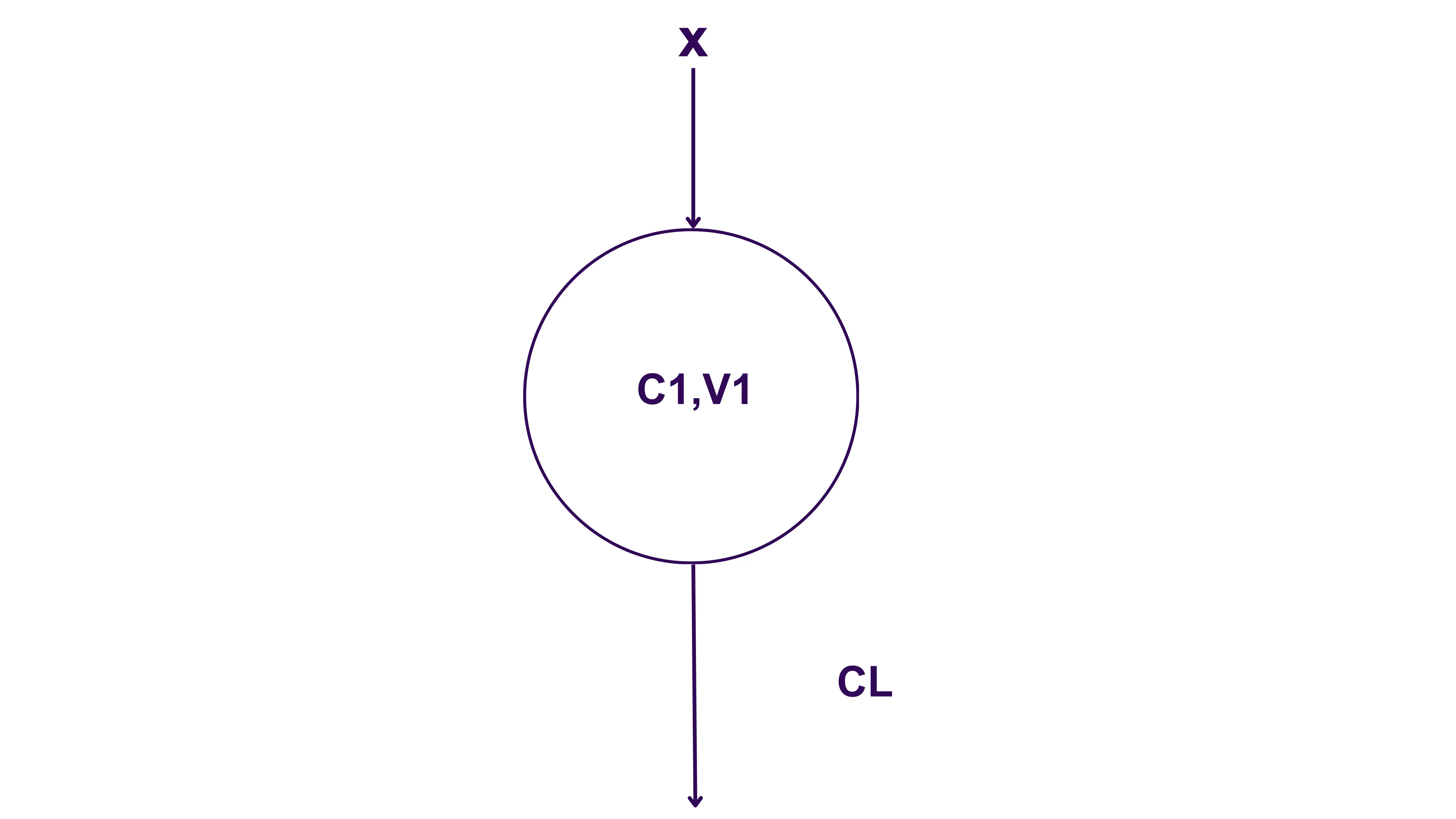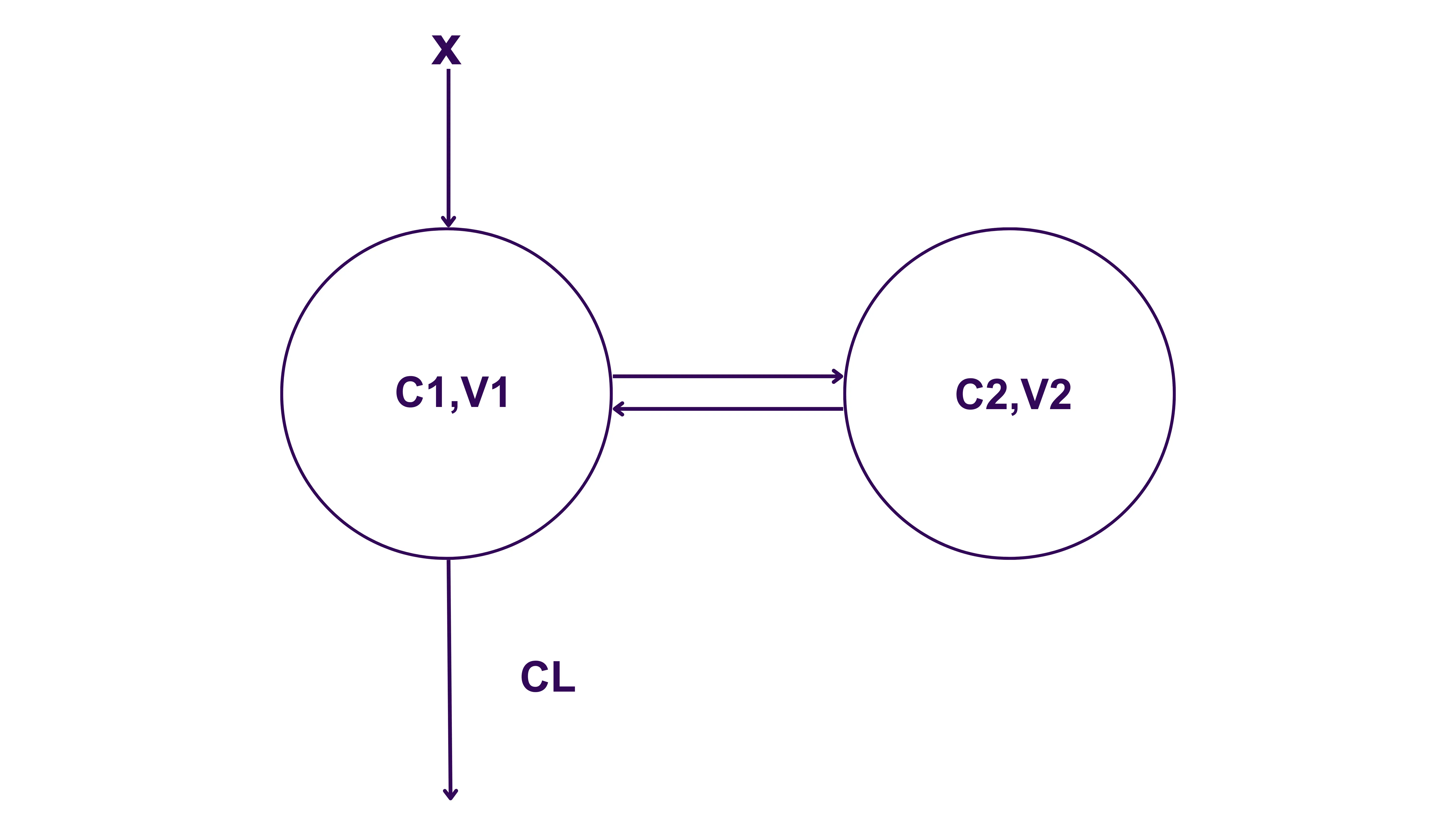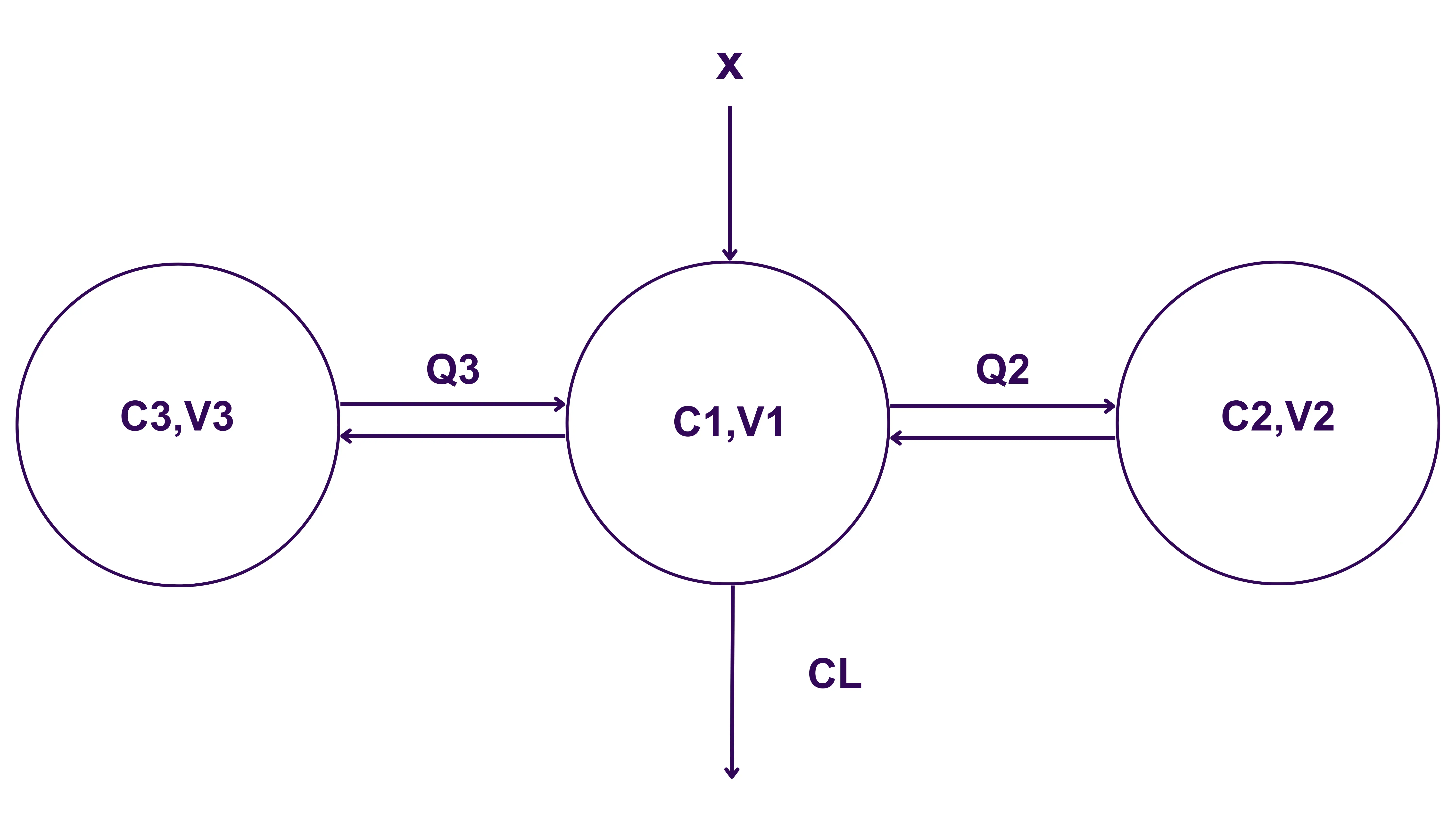Pharmacokinetic (PK) modeling is a tool used to help drug developers understand a drug’s effects on the body by analyzing its absorption, distribution, metabolism, and excretion (ADME) properties. These effects are typically summarized using PK parameters such as clearance and volume of distribution, which are necessary for understanding the effects of a drug on the body.
PK models can range in complexity from models with a single compartment to models containing hundreds of compartments. Examples of possible compartments range from specific tissues and organs, such as the liver, kidneys, lungs, or even the blood’s circulatory system, to more general groupings, such as incorporating all highly perfused tissues into one compartment. Each type of model, from the simplest one-compartment model to more complex models, has its own applications and can be used to gain valuable information from clinical or non-clinical data.
Let’s explore a one-compartment model with an analogy. One-compartment modeling views the human body as one large bucket with one outflow port at the bottom. Imagine water being poured into the bucket. This is similar to drug absorption into the body. Then imagine the water in the bucket dripping out of the bottom through the port. This is similar to drug clearance from the body. In our analogy, a one-compartmental model uses mathematical equations to describe the concentration of water (drug) in the bucket (body) at any given time as water is being poured into the bucket (absorption) and begins dripping out (clearance/excretion).
A two-compartment model adds an additional bucket to the system. In this analogy, the first and second buckets are connected by a tube or valve so that water (drug) can flow between them (distribution/metabolism). These buckets (or compartments) are used to better estimate PK parameters by modeling the flow of a drug throughout the body.
What is a Compartmental Model?
Compartmental modeling is a model-based method used to estimate PK parameters. To apply this method, the body is divided into hypothetical compartments. Often, the containers used in compartmental modeling do not represent actual physiological tissues in the body but are used as a proxy so that PK parameters can be determined. For example, when using a one-compartment model, we can determine the overall rate of removing the drug from our body without specifically looking at the different organs that remove the drug.
Compartmental modeling is a general term that refers to a model with at least one compartment. Typical compartmental models have one to three compartments, but more compartments can be added to the model depending on the application. For example, in a type of compartmental modeling known as whole-body physiologically based pharmacokinetic (PBPK) modeling, there can be as many as one compartment for each organ of the body, which represent more realistic physical properties of the body.
Compartment Model vs. Noncompartmental Analysis
Compartmental models can reveal insights into a drug’s underlying effects that are not always obvious from a noncompartmental analysis (NCA). While a one-compartment model and a non-compartmental analysis both assume the entirety of the body exists as one container, the difference between the two is that since the one-compartment model is a model-based method, parameters, such as clearance, can be changed to explore the effects of specific disease states, such as renal impairment or induction of metabolism, on the PK characteristics of a drug. An NCA is a model-independent method where PK parameters are estimated directly from the observed data, requiring no historical knowledge of the PK characteristics of the drug in the body (absorption rate or rate of elimination, etc.), which means partitioning the body into compartments is not necessary. The benefit of conducting an NCA is that because no assumptions related to body compartments are required, it is less complex and more cost-efficient than compartmental modeling while still providing valuable information on a drug’s PK characteristics.
However, in an NCA, PK parameters are estimated directly from the data. Since this is a model-independent approach, changes to the study design (such as an alternate dosing regimen) can only be extrapolated using simple superposition but are limited by what dosing regimens can be used. The value of compartmental models over an NCA is that they can be useful for a wider range of applications. For example, in a compartmental model, the dosing regimen can be altered to produce simulated concentration-time profiles that can be used to understand the impact of changing the dose. Not only can compartmental models be used to estimate PK parameters, but they can also be used to describe differences between individuals, such as how patient-specific covariates affect drug disposition when performing a population PK (popPK) analysis.
Types of Compartmental Models
As mentioned before, typical compartment models are analogous to dividing the body into one to three compartments (buckets). Below are brief introductions to one-compartment, two-compartment, three-compartment, and whole-body PBPK models.
One-Compartment Model
A one-compartment model assumes that all the tissues in the body are contained in a single compartment called the “central compartment.” An example of one-compartment model structure is shown in Figure 1.

X: Dose; C1: Central compartment concentration; V1: Central compartment volume; CL: Clearance
The simplicity of this model makes it easy to construct, provides a straightforward interpretation, and is cost-efficient. The drawback of this type of model is that, by its construction, the drug is assumed to be equally distributed throughout the whole body instantly, which is rarely true. For drugs that do not distribute throughout the body, the simplification that this type of model provides may make it the most appropriate option. For drugs that are highly distributed throughout the body, a more complex model may be necessary.
Two-Compartment Model
Two-compartment models account for the distribution parameter that a one-compartment model cannot by dividing the single compartment into two separate containers called the “central” and “peripheral” compartments. An example of two-compartment model structure is shown in Figure 2.

X: Dose; C1: Central compartment concentration; V1: Central compartment volume; C2: Peripheral compartment concentration; V2: Peripheral compartment volume; CL: Clearance; Q: Intercompartment clearance
The central compartment represents plasma and highly perfused tissues, including the kidneys and the liver. The drug will only leave the body through the central compartment. The peripheral compartment represents poorly perfused tissues such as muscle. In this model, the drug is not assumed to be evenly distributed throughout the body but disbursed between these two different compartments. Grouping together tissues with similar blood flow rates allows for parameters such as drug distribution to be more accurately represented. However, in cases where the drug has three distinct elimination phases, a two-compartment model may not be sufficient.
Three-Compartment Model
Three-compartment models include another peripheral compartment in addition to the two compartments listed above. An example of three-compartment model structure is shown in Figure 3.

X: Dose; C1: Central compartment concentration; V1: Central compartment volume; C2: First peripheral compartment concentration; V2: First peripheral compartment volume; C3: Second peripheral concentration; V3: Second peripheral compartment volume; CL: Clearance; Q2: Intercompartment clearance between first peripheral and central compartment; Q3: Intercompartment clearance between second peripheral and central compartment
This additional peripheral compartment is used to separate the highly perfused tissue from the plasma. In the three-compartment model, the central compartment represents only the plasma. The first peripheral compartment represents the highly perfused tissues and the second peripheral compartment represents the scarcely perfused tissues. This type of model has all the benefits of the two-compartment model and may be able to better describe a drug which exhibits three stages of elimination. The drawback to this type of model (and all the aforementioned compartment models) is that distribution to a specific tissue cannot be explored which might be beneficial if drug concentration in the liver, for example, is of particular importance.
Whole-Body PBPK Model
Whole-body PBPK modeling is a type of compartmental modeling in which each tissue of the body is represented by its own compartment. In contrast to a one-, two-, or three-compartment model, the compartments in a PBPK model are physiologically based and grounded in biology. Blood flow rates between specific organs, tissue partitioning coefficients, and organ size can all be included in this model. Adding this physiology makes a whole-body PBPK model much more versatile.
PBPK models have been used in a wide range of applications from first-in-human (FIH) dose prediction to drug-drug interaction (DDI) studies. However, this added complexity increases the time and costs necessary to construct the model. Additionally, the data requirements for creating this type of model are much larger compared to smaller compartmental models.
Compartmental Modeling and Your Drug Study
From which type of models will work for you to deciding at what stage they should be implemented or adapted, choosing which compartmental model best suits your study’s unique needs can be difficult to navigate. Allucent has a team of experts with experience designing models tailored to address your PK challenges throughout your development journey, including estimating PK parameters, characterizing PK across multiple studies, understanding observed patient variability, and much more.
Contact us to learn more about Allucent’s compartment modeling and PBPK services.
